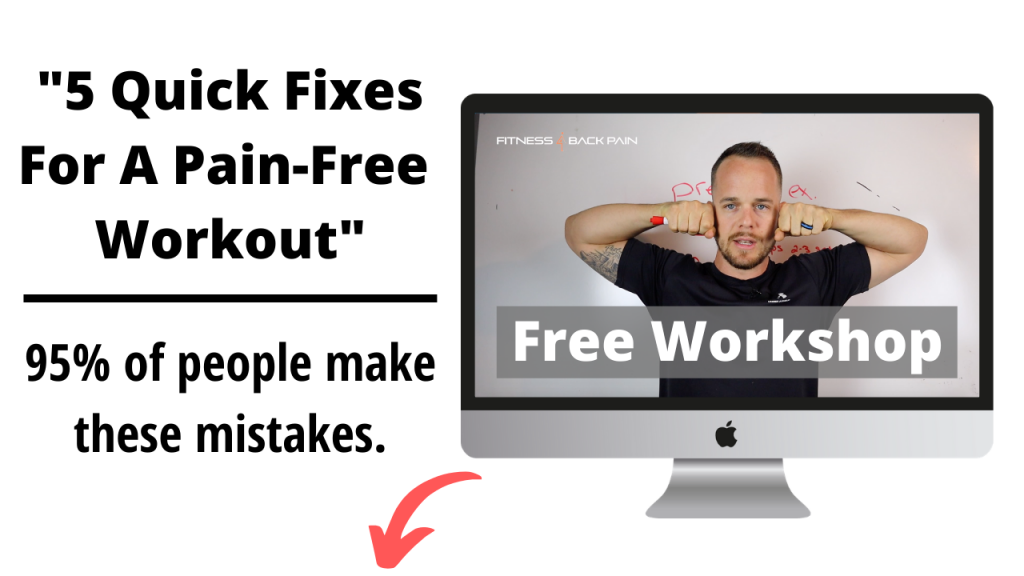Actually sticking to a walking program has been the last thing to finally come around when it comes to my pain management program. Just like any other working individual with kids, time is hard to come by unless you manage it well. When it comes to walking I am not talking about going for a stroll once or twice a week either. In order to get the most out of what Dr. Stuart McGill calls “Natures back Balm” you have to do it right. Today I want to give you just that. From the most severe case to the soon to be 100% pain free, walking is a must and I want to show you exactly what you’re going to do.
Why Walking?
From a fundamental stand point, walking is the most basic of basic adult daily movements. It’s something we really don’t think about simply because we become really good at it. The science behind walking is pretty simple. With every step there is a checks and balance system going on within your musculature system. Your arms, hips and surrounding muscles make up this system. Each step is a series of small muscle contractions that work to keep the pelvis from sinking down on one side and bending the spine (McGill, Back Mechanic. pg. 114).
It doesn’t stop there, a few other key players in walking is the arm swing, walking speed and the elastic tissue in the back which all help to unload the spine while walking. Without making it too complicate your torso is a big energy producing machine which utilizes multiple aspects of walking to deload and reduce stress on the spine. They all work together to bring this relief, one is not necessarily greater than the other.
There are 3 aspects to walking that need to be addressed. Today I want to give you my 3 most important things to remember when sticking to you’re walking program for relief.

Walk Right
Dr. Stuart McGills touches on this topic in his book the Back Mechanic. He goes into comparing the American way of walking vs. the way the Russians walk. Americans tend to have a head down approach to walking. Everything we do is lead with our head. If you think about it, this constant forward position places a lot of load on the lower back causing what could be an inflamed disc to get even worse. Over time, a bad habit of this poor “spinal stacking” can lead to issues. The Russians on the other hand lead with their chest. They tend to have a taller more stacked approach to their gate. This helps with proper “spinal stacking” while using the rest of the core to stabilize the trunk in this position.
The second thing to look at is walking speed. Often times walking is prescribed as a slow leisure type thing. Which sounds like it makes sense but you will often hear complaints regarding pain while walking at slower paces. Stuart McGill goes over that this is often due to the speed in which the person is walking. Slow walking puts more of a static load on the spine when compared to brisk walking. “The muscles add crushing forces to the spine” (McGill, Back Mechanic pg 114). Pair that with poor posture with walking and you have a very painful experience for anyone dealing with back pain!
Walk Often
Now we need to address how often your going to be using walking as a cure for your back pain. I personally started the wrong way. It was more of a thing I did when my back pain would flare up. It always seemed to help but only for a short period of time. As I did more research and experimenting, It’s not until you are walking multiple times a day, through out the week that you really get the lasting benefits of walking. I quickly changed up what I was doing and saw some solid results.
This is what I did.
I walk twice a day. Once in the mid morning when I get to the gym and another after 3pm. Each walk lasts about 15 minutes on the treadmill at about 3.4 speed. It’s after the walk that I focus on my three main core exercises and stretching my hip flexors. I do this 3-4 x per week.
Walking and Core Training
- Fast Paced (but controlled) Walk: 15 Minutes
- 90/90 Breathing with Hip Lift to help correct my hip position. 2 sets
- Dead Bugs 2 x 8-10
- Front Planks with a posterior pelvic tilt 3 sets of about 35 seconds or until the slightest form break
- The Founder 5 cycles
These numbers are based around my own current recovery and tolerance. My goal is to get up to 2 30 minute walks per day with 2 core training circuits a day. As long as my back stays pain free and I feel good, then I will continue to chase that goal.
Progress safely.
We all want to get better as fast as possible. When it comes to back pain you really need to buckle down embrace the time it takes to truly find freedom from your pain. For this point I can’t stress enough that you need to start at your own pain capacity. What I mean by that is I don’t want you too see what I am doing and just copy that word for word. What you don’t see is what I have done leading up to the workout I listed above. Before anything, you always want to get cleared by a professional. If your trusted specialist says not to walk than don’t walk. If your cleared for activity then consider these steps for your walking program.
For the more sever cases walking needs to be taken one step at a time, literally. If that means you can’t walk to the end of your driveway without your pain rearing its ugly head, than you need to stop half way down the drive and turn around. Your goal for every step you take is to do it PAIN FREE. I am at a point where my back pain is more occasional and I am trying to go from 80% improved to 100% improved. For you, you’re limited to what your back can handle. For example, if walking 20 steps is painful then start with 10. See how that feels. If you can do it without any increased pain then stick to multiple 10 step walkings session throughout the day. If you can handle more than do more if you can’t handle that much than do less. Your goal is to progress one step at a time to the point where you are working up to longer distances. This may seem monotonous and boring but if you have been following this blog for any time you would see a pattern supporting the work you do needs to be without pain. You will never just “push through it”.
As you improve, you can add changes such as longer walks with short breaks to reassess your posture and walking technique, walking up a slight incline or down hill (depending on which is better for your situation) and short jogs. These are options to consider only if you have graduated the beginner pain free steps.
If your new to this site linked below are my top 3 exercises I used to help build core stability. They are also highlighted in the book I will link at the end of this article. I suggest you do these multiple times a day according to your level of pain. This should also be done in such a way where your pain is not aggravated.
This is what the master, Stuart Mcgill suggests

In McGills new book, Back Mechanic he goes over 5 ways to build a pain free walking posture. I have listed them below for you.
- Maintain an upright posture which embraces a pain free stance. This can be achieved by proper “stacking” of your spine over your hips. Adjusting the tilt of your hips either forward or back should give you a sweet spot you can resort back to if you feel you posture gets out of line. Your chest should be high and your head and neck should be straight over your shoulders and not leaning forward.
- Maintain a stiffness in your abdominals. Don’t squeeze so hard to where your aggravate your back bit jet enough to be able to lock in your correct posture.
- Start in one spot doing “marching steps”. With this your establishing a strong walking movement with your knees coming up slightly higher than they would if you were walking normal.
- Start walking with your arms swinging at the shoulders not just the elbows.
- Progress with larger and faster steps until you can maintain a pace that looks like you are trying to get somewhere in a hurry. You still want to maintain good posture and control. This isn’t about reenacting your last sprint to airline terminal where you almost missed your flight. Controlled yet aggressive.
These exact tips can be found in Stuart McGills book The Back Mechanic
If done right, walking can be one of the best pain soothers you have ever experienced. Focus on a strong pace with good posture and body movement and stay away from slow shuffle step style walking. Walk with purpose!
I hope this article helps in some way! If it did be sure to let a friend know about it!
If this is your first time here be sure to join everyone else in my premium content group located in the link below!
Thanks,
William
Reference: McGill, S (2015) Back Mechanic. Ontario, Canada: Backfitpro Inc



Per MRI 4yr ago I have:
“Grade 1 spondylolisthesis at L4-5 due to spondylolysis at L4, resulting in bilateral foraminal narrowing and possibly impingement upon exiting nerve roots.”
I recently injured my back doing DL’s, I don’t think it was the DL per say as much as I wore a support belt (never do) and maybe it kept my body from adjusting into positions it normally would go. Xray at chiropractor showed it has gotten a little worse in the 4yrs since, though disc spacing looks great.
At any rate, initially it was quite bad pain, but it has been almost 2 weeks now and I am A LOT better but I still have some lower left back pain going into my hip area, and a dull sensation on my outer left calf. This pain will grow with walking/standing until it makes me stop, and I think sitting at my desk job makes everything tighter than it should be as I it seems better on the weekends.
Should I push the walking to get more blood flow and work the muscles, or should I back off? It is very discouraging because I was fairly active before, and I am seeing my RHR raise every day and I am one of those people that need physical exertion to keep me balanced. I have stopped taking anything for pain, with it I can walk a lot further before it becomes too much to bare – but I don’t like the pressure that puts on kidneys/liver so as of yesterday I have not taken anything and I am getting by.
Things I used: TENS machine, contrast (hot/cold) therapy, teeter hang up (after the first 5 days, was hurting too much prior, and honestly its just became easily doable in past couple of days), chiropractic adjustment/ultrasound therapy, trying to walk more, stretches, and fasting (to help with inflammation and healing response).
Once I am healed more I plan to get with a McGill certified Dr to try to get my back 100% and find out how to keep it that way. Prior to this I would say I was 90ish % with some days not even thinking about my back and others having a moderate level of things like tingling etc… Really hoping to get back to that point if possible.
I love this. I have back pain either during walking or if none presents then, a deep pain upon sitting or flexing. It is the opposite of the back pain people feel upon rising from a chair after sitting. It is as if my back is winding up a pain when I stand or walk and although sitting and flexing gives me pain at first, the pain completely dissapates after I continue to sit. Then I can get back to my feet and the cycle starts again.
This sounds like there could be some tightening going on when you stand (as in your body does not feel safe so its trying to compensate for the lack of stability which is actually causing pain). Often times when we fear a certain movement our bodies will automatically tighten to protect the area well, years of this self protection strategy and your body starts to show symptoms. I say this because when you are sitting you are completely at rest. When standing your muscles are active and engaged. This is something we would want to explore a little more for sure.